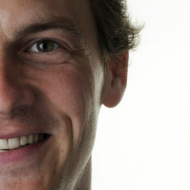ATD TK 2015, session TH304 is about content wrangling. The word (wrangling) seems to fit the first speaker, Aaron Silvers. A very peaceful looking man, I can imagine him coming in to put order into the mess and bring everything together. As a learning designer, technologist and strategist, he has worked with the NFL, US departments of defence, homeland security and education …and plenty of others. His equally cool co-speaker Megan Bowe works at Knewton, is a principal at consultancy company “Making Better” and co-created the “Up to All of Us” community.
Would you like to audit all the content in the organisation to know what is out there and to organise it better? Or set-up a platform to improve social learning and sharing of expertise and content? Or make existing materials more easy to search and digest?
If the answer is yes, you need to do a good job of content wrangling: Find what you have and make it usable for your people.
Megan tells us the primary steps for getting your content in order:
- First, you need to get everything together (inventory) and know what you have, what you can delete and what you need more of (audit)
- Next, think about how your people search for content, so you can create an effective “tagging taxonomy” to improve search of that content. Megan’s suggestion for doing this effectively is to do a card-sorting exercise with the users/stakeholders in the organisation. Together, they will create the right structure for the content.
- Now think about how small you can make content, so that it is effective, but easy to swallow (granularity)
- Then make things modular, so that content can stand alone. This will allow you to put things in the right order and also re-use content for multiple uses.
Once your content is broken down into the right collections of granular and modular well-tagged pieces, it’s time to think about how and where you will put it all together.
Back on the mic, Aaron Silvers says that when we do this, we must remember the mission of our work and the context of today’s business: Our aim is to make it easier for a responsive organisation to pull out content, even when the context or environment changes. We have to be sure that what we make is effective today, as well as sustainable for the future.
Silvers suggests that we take a lean approach to this work, focussing on what really matters: Where are our users? Who are they? What are they trying to do? And why?
Rather than get into the technology of content platforms at this point, the formal part of the session came to what seemed to be an abrupt end, opening the floor to any and all questions.
Not being a real techy guy and never building systems for corporate learning, I wondered why I was in this session for a while. But when I looked a little closer at what was being discussed, I realised that what Silvers and Bowe have done is give an effective and lean approach to consulting with customers and organising things (anything) in a given context.
I can imagine (I know, I’m a geek) going home to my DVD collection like a character from “High Fidelity” and getting all that film in order, searchable and chunked down into “all the best bits” for consumption by friends and family. But their work is much more than that…
When they talked about card-sorting, it reminded me of courses on metaphysics, Pirsig’s books (“Zen and the Art of Motorcycle Maintenance” and “Lila”) and how the structure you give to something defines the experience you have of the world. There is beauty in this functional work. Silvers and Bowe are not wrangling content at all. They are defining purpose and values for the organisation, creating the space for breathing creativity and innovation.
Humans like to categorise and structure things. It brings comfortable order and a sense of safety. But the way these categories and structures are defined can change the way we experience things.
For example, if I look out of my window to Las Vegas Boulevard, I may compartmentalise what I see into buildings, water, people and lights. If I were thinking about making changes to that environment or its processes, I might then think of how the space is used and the efficient flow of traffic. But if I break down that same vision into entertainment activities, advertisements and mood, I would have a completely different vision. And that vision could lead me to work instead on improving the user experience or linking publicity to user emotions.
Our perception defines our reality and our subsequent behaviour.
And so, the work of “putting things in order” is not to be overlooked. Get it wrong and you may have an impossible mess that no-one can deal with. Or you may have a specific vision that leads to specific (potentially undesired) outputs. Get it right and you will give people the power to see new things, find more value and create change.
You might also find the answer to the questions that opened this blog-post.
Thanks for reading!
@dan_steer
ps For more “how-to” information on content wrangling, go here: http://eepurl.com/LpdwD
